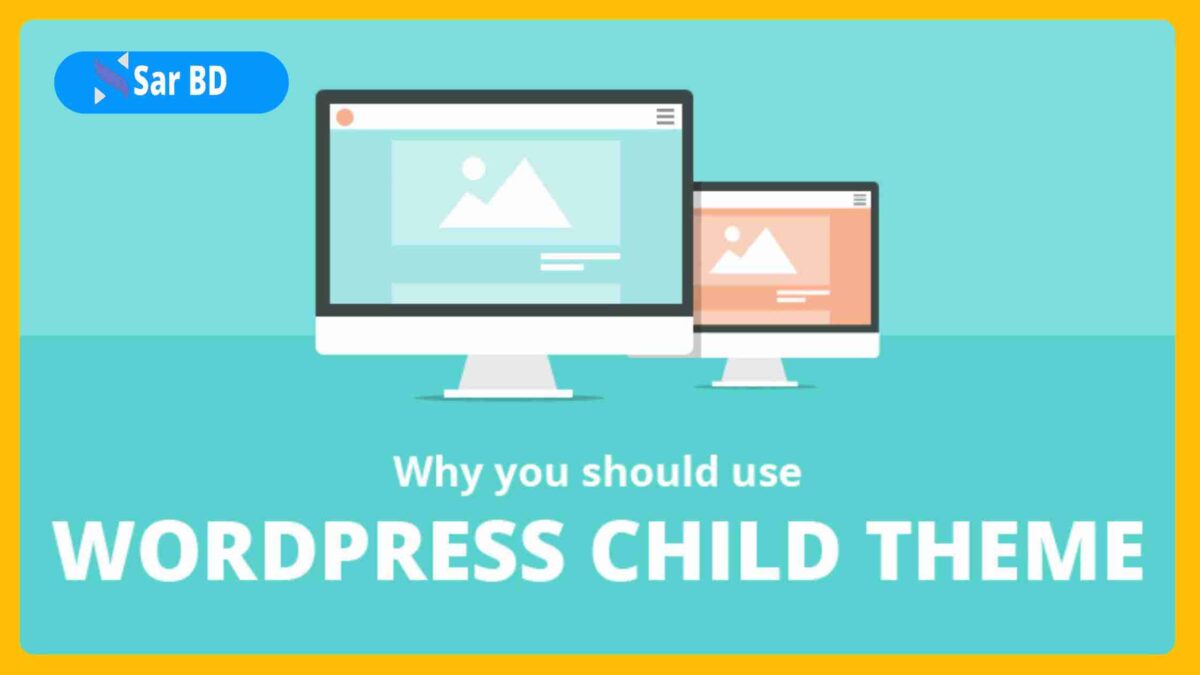What Is Child Theme in WordPress and Why Use It
Introduction
What Is Child Theme in WordPress and Why Use It is very important topic you should learn. When working with WordPress, customization is often essential. Whether you’re building a personal blog, an eCommerce store, or a corporate website, having control over your theme’s design and functionality is key. But what happens when you want to make changes without disrupting future updates? That’s where child themes come into play. If you’ve ever asked yourself, what is child theme in WordPress and why use it, this comprehensive guide will provide all the answers you need.
Understanding child themes is crucial for anyone looking to scale their WordPress development while ensuring long-term stability and ease of maintenance. In this article, we’ll explore in-depth what is child theme in WordPress and why use it, and why every developer or site owner should consider using one.
What Is Child Theme in WordPress and Why Use It?
Definition and Core Concept
What is child theme in WordPress and why use it? A child theme is a WordPress theme that inherits the functionality and styling of another theme, called the parent theme. It acts as a safety layer that allows you to make changes without affecting the original files.
- Separation of Customization and Core Files: When you use a child theme, your customizations live in a separate folder. This separation means updates to the parent theme won’t override your changes. It’s like having your own sandbox to play in without touching the main playground.
- Risk-Free Updates: WordPress themes get updated for new features, bug fixes, or security patches. With a child theme, you can safely update the parent theme without losing any of your custom work.
- Simplified Maintenance: Keeping custom code in a child theme makes it easier to troubleshoot and manage changes. You know exactly where your custom functions or styles reside.
- Easy Reusability: Developers can reuse child themes for multiple projects. Once configured, your custom features are portable.
- Learning Tool for Beginners: Creating a child theme is a practical way to learn how themes work in WordPress. It offers a low-risk environment for beginners to experiment.
- Customization Without Coding the Core: If you want to add CSS tweaks or modify PHP files, you don’t need to alter the parent theme. The child theme handles it.
- Time-Efficient Workflow: Once your child theme setup is ready, you only need to update the relevant parts. This saves significant time during development.
- Preserves Design Consistency: By using a child theme, your core design remains consistent, while allowing you to tweak individual elements as required.
Benefits of Using a Child Theme
Why Every WordPress Site Should Consider One
Now that you understand what is child theme in WordPress and why use it, let’s dive into the actual benefits in a real-world context.
- Secure Your Custom Work: You won’t lose changes after updates. That’s one of the main advantages and the core reason behind using a child theme.
- Modular Code Structure: By keeping modifications separate, your codebase becomes cleaner and easier to navigate.
- Team Collaboration Becomes Easier: When working with teams, having a child theme makes it easier for developers to understand and manage custom work.
- Optimized Performance: With well-organized child theme files, performance doesn’t degrade. Everything is structured efficiently.
- Consistency Across Projects: Developers can create a standard child theme template that can be reused across clients, saving time and effort.
- Freedom to Experiment: Want to try a new design tweak or feature? You can do that in your child theme without fear.
- Efficient Debugging: Isolating your changes in the child theme makes debugging simpler. You can test your functions independently.
- Avoid Plugin Overload: Sometimes, simple functionalities that would otherwise require a plugin can be added via the child theme, reducing your site’s reliance on plugins.
How to Create a Child Theme in WordPress
Knowing what is child theme in WordPress and why use it is just the beginning. Let’s get practical.
- Create a New Folder: Navigate to
wp-content/themesand create a folder for your child theme. The name should clearly reflect its relation to the parent theme. - Add style.css File: This file will include metadata and any custom CSS. Use the template line to link the child theme to the parent theme.
- Add functions.php File: Here, enqueue the parent and child stylesheets. This ensures proper styling is loaded.
- Activate the Child Theme: Go to your WordPress dashboard and activate the child theme just like any other theme.
- Start Customizing Safely: Begin adding your custom styles or PHP functions without affecting the parent theme.
- Use Template Overrides: Copy files from the parent theme to the child theme directory to override them safely.
- Test Thoroughly: Always test your site after every change to avoid functional issues.
- Document Your Changes: Keeping track of what you modify helps during future maintenance.
Common Use Cases
Understanding what is child theme in WordPress and why use it becomes even more meaningful with practical examples.
- Adding Custom Styles: If your client wants a unique color scheme or typography, child themes make it possible without affecting the main theme.
- Customizing Template Files: Need to change how a product page looks? Copy the relevant file from the parent theme and modify it.
- Inserting Custom Functions: Add extra functionalities to
functions.phpwithout touching the parent theme’s file. - Localized Language Support: Add or override language files for multilingual support.
- WooCommerce Tweaks: Customize WooCommerce templates and styling specific to eCommerce setups.
- Design Layout Changes: Alter the header, footer, or sidebar structure as per your branding.
- Security Patches: You can manually implement security best practices in your child theme.
- Custom JavaScript Integration: Safely enqueue custom scripts without disrupting the parent theme’s behavior.
Mistakes to Avoid with Child Themes
Even when you know what is child theme in WordPress and why use it, there are pitfalls to watch for.
- Failing to Enqueue Styles Properly: If you don’t enqueue parent styles correctly, your site might look broken.
- Overriding Too Many Templates: Overriding multiple templates can create a maintenance headache.
- Lack of Documentation: Not documenting your changes can confuse other developers or even yourself.
- Mixing Logic and Presentation: Avoid putting heavy PHP logic inside templates. Keep it in functions.
- Ignoring Best Practices: Always follow WordPress coding standards for long-term benefits.
- Poor Naming Conventions: Use clear and unique names for functions and classes.
- Not Testing on Updates: Each time the parent theme updates, test your child theme for compatibility.
- Using Insecure Code: Never copy-paste code from unreliable sources into your child theme.
When Not to Use a Child Theme
While understanding what is child theme in WordPress and why use it is essential, there are exceptions.
- Minor CSS Changes Only: For small tweaks, using the WordPress Customizer or a CSS plugin might be quicker.
- Heavily Customized Themes: If you’re building from scratch, you might not need a parent theme at all.
- Premium Theme Builders: Some advanced themes (like Divi, Elementor Pro) allow in-dashboard customization that may reduce the need for a child theme.
- Infrequent Updates: If you’re sure the theme won’t be updated, a child theme might be unnecessary, though it’s still good practice.
- Using Site Builders: For sites relying solely on drag-and-drop builders, code-level customizations might not be required.
FAQs About What Is Child Theme in WordPress and Why Use It
Q1: Is a child theme necessary for every WordPress website?
A: Not always. If you’re making significant customizations, it’s crucial. But for minor changes, you might get by with the Customizer.
Q2: Can I create a child theme for any WordPress theme?
A: Yes, as long as the parent theme is well-coded and supports it, which most reputable themes do.
Q3: Will using a child theme slow down my website?
A: No. A well-coded child theme does not affect performance. In fact, it helps organize code better.
Q4: Can I switch back to the parent theme later?
A: Yes, but changes made in the child theme won’t carry over. Always back up your work.
Q5: Is it difficult for beginners to set up a child theme?
A: Not at all. With basic understanding, you can create one in under 10 minutes.
Conclusion: Why You Should Start Using a Child Theme Today
Now that you know what is child theme in WordPress and why use it, it’s time to take action. Child themes provide a safe, organized, and scalable way to customize your WordPress website. They are invaluable for anyone serious about building and maintaining professional websites.
By using a child theme, you’re not just customizing—you’re future-proofing your website. It gives you flexibility, protection, and efficiency all in one.
So go ahead—set up your first child theme and take your WordPress development to the next level.
Have more questions about what is child theme in WordPress and why use it? Leave a comment or get in touch—we’d love to help!


